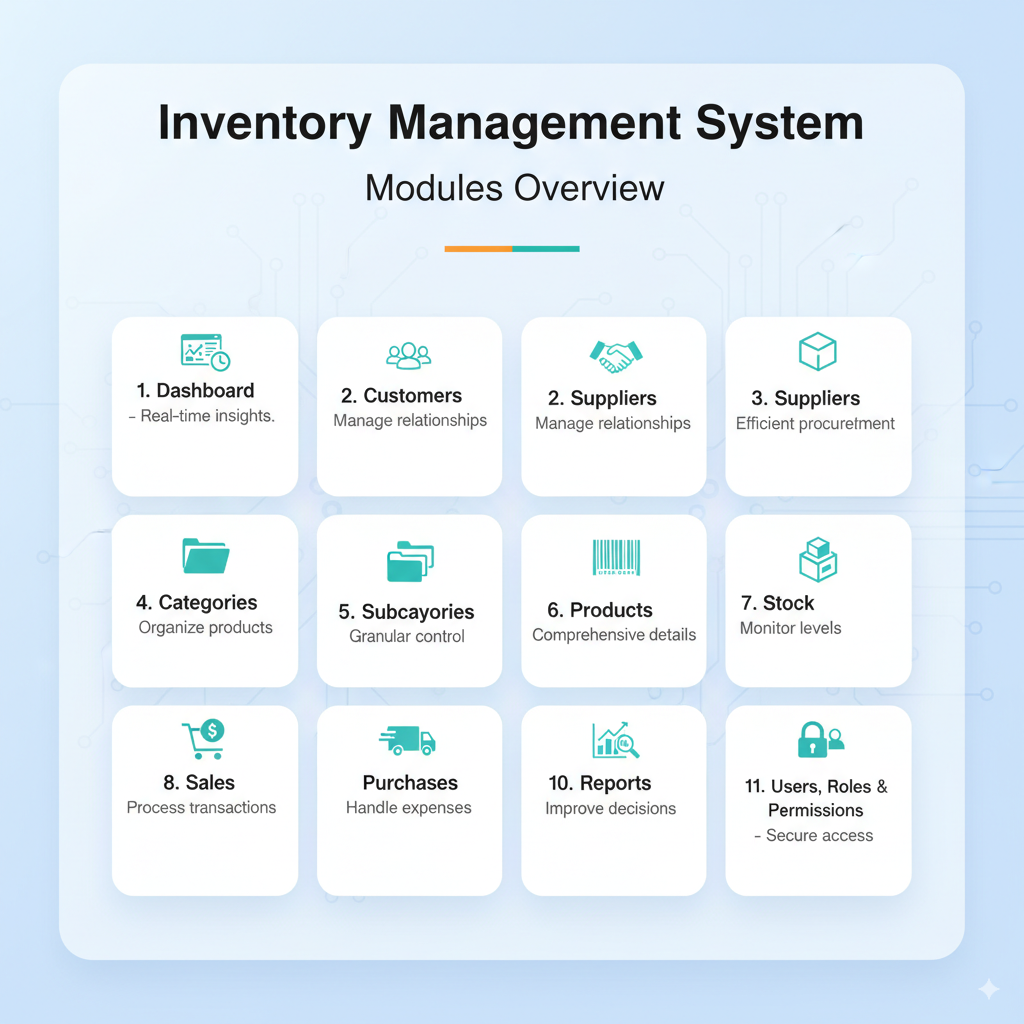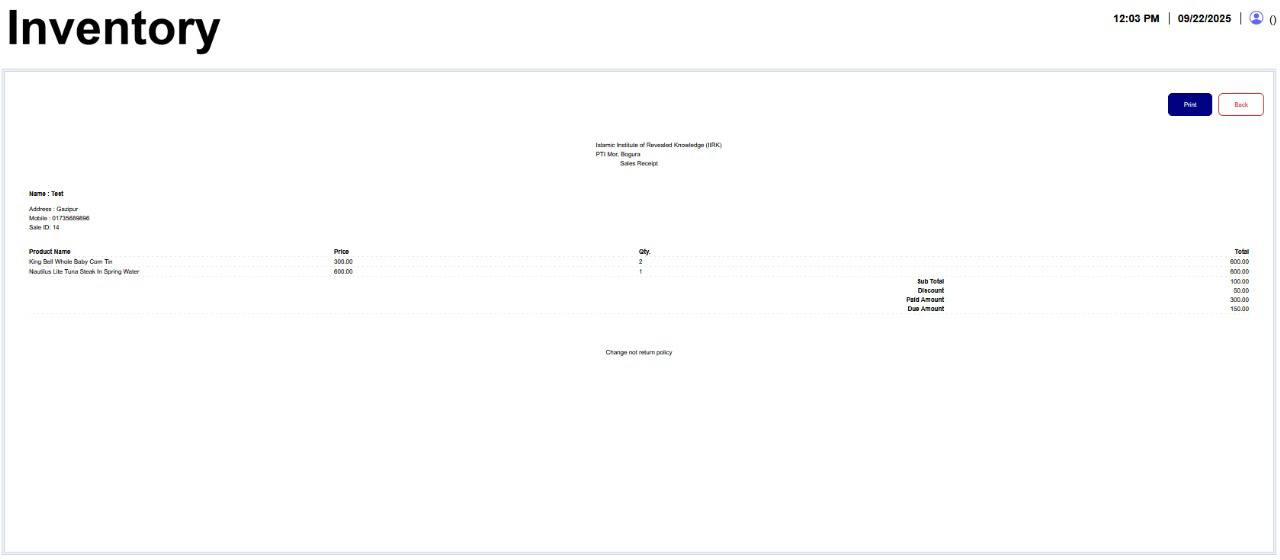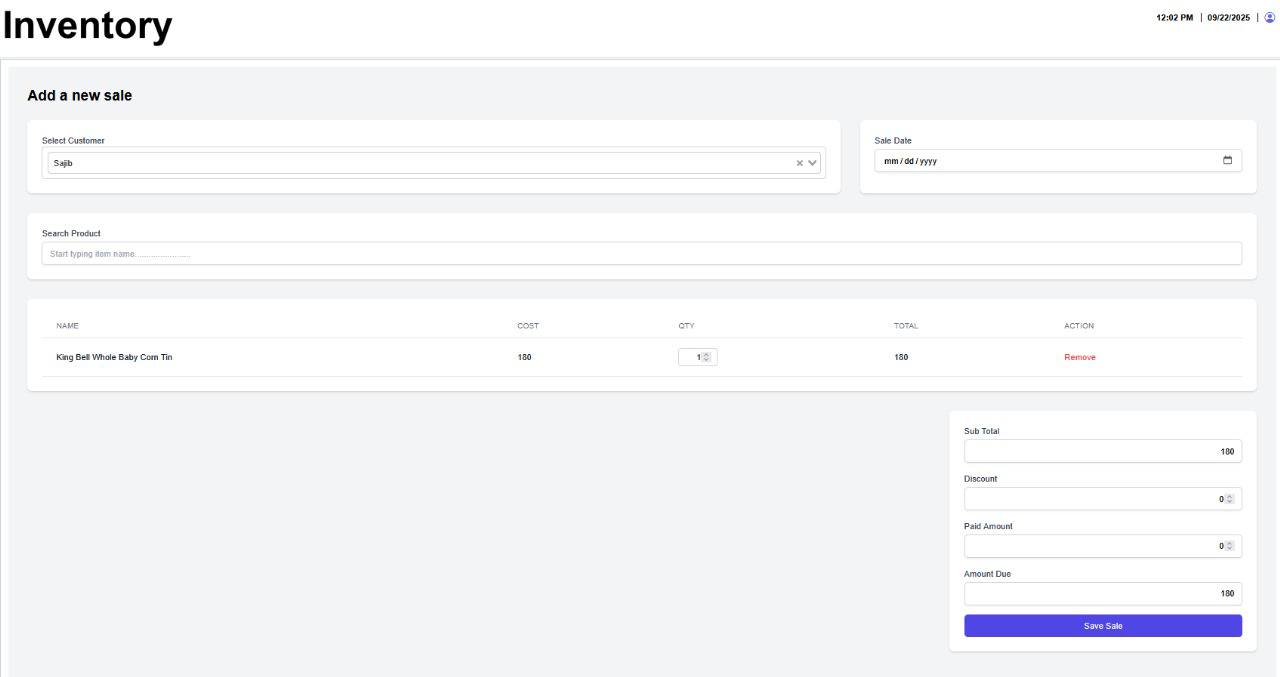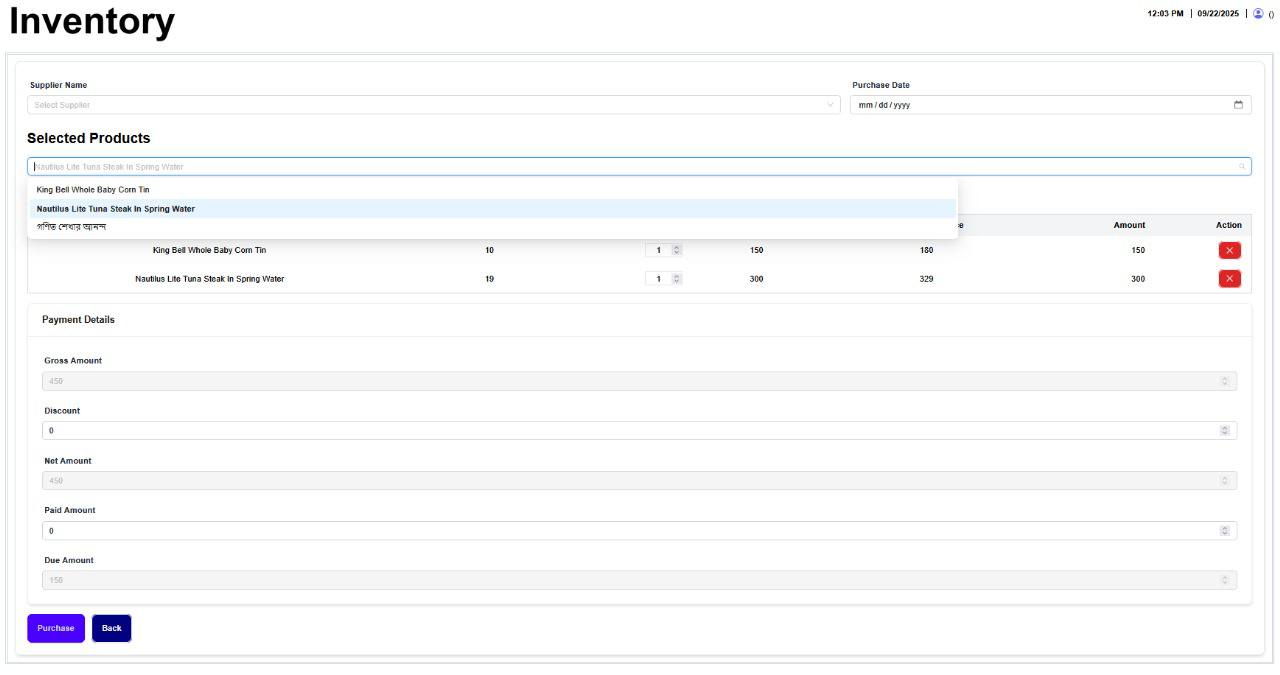
Our Inventory Management System is designed to simplify, automate, and optimize every aspect of inventory operations. From tracking stock levels to managing customers, suppliers, and generating insightful reports, this system ensures smooth business workflows with accuracy and efficiency. Below is the detailed module list with descriptions:
1. Dashboard
A real-time overview of your entire inventory system, featuring key insights such as total sales, purchases, stock availability, and business performance summaries—helping you make quick and informed decisions.
2. Customers
Manage all your customers in one place. Easily add, edit, or track customer details, purchase history, outstanding payments, and loyalty insights to build stronger relationships.
3. Suppliers
Maintain supplier information efficiently. Track supplier-wise purchases, payment records, and outstanding balances to ensure smooth procurement and better supplier management.
4. Categories
Organize your products into main categories for streamlined management and easier search functionality. This improves data organization and reporting accuracy.
5. Subcategories
Add an extra layer of product classification by creating subcategories. This allows for more granular control over inventory grouping and reporting.
6. Products
Comprehensive product management including product details, SKUs, barcodes, pricing, stock levels, and images—ensuring accurate product tracking and control.
7. Stock (Inventory Management)
Monitor stock levels in real-time. Track available, low, and out-of-stock products to prevent shortages, overstocking, and ensure timely replenishment.
8. Sales
Manage the entire sales process seamlessly. Record sales transactions, apply discounts, generate invoices, and track revenue with ease.
9. Purchases
Handle procurement activities efficiently. Record supplier purchases, update stock automatically, manage purchase invoices, and track expenses for better financial control.
10. Reports
Generate detailed reports including sales, purchases, stock movement, profit & loss, and customer/supplier statements. These insights help improve decision-making and business growth.
11. Users, Roles & Permissions
Enhance system security with role-based access control. Assign specific permissions to users based on roles (e.g., admin, manager, cashier) to ensure data security and accountability.







